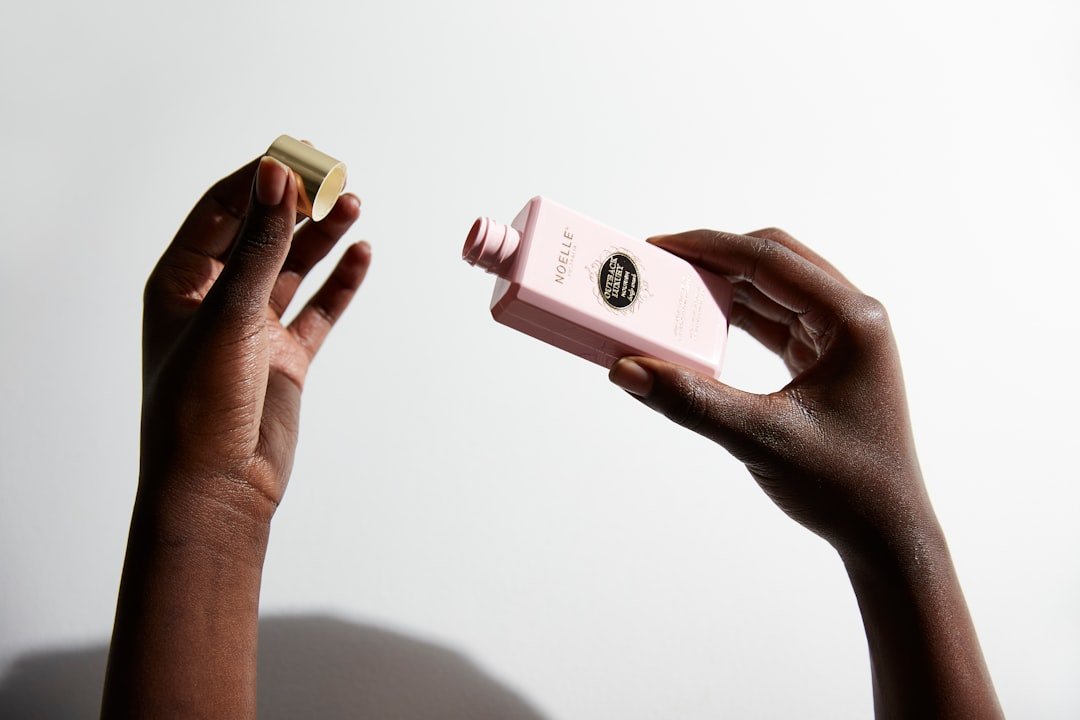Acne-prone skin is a common concern that affects individuals of all ages, though it is most prevalent during adolescence and young adulthood. This condition arises from a combination of factors, including excess oil production, clogged pores, bacteria, and inflammation. The skin’s sebaceous glands can become overactive, leading to an increase in sebum, which can mix with dead skin cells and other impurities.
When these substances accumulate in the pores, they create an ideal environment for the proliferation of acne-causing bacteria, resulting in various forms of acne, such as blackheads, whiteheads, and cystic lesions. Understanding the underlying mechanisms of acne is crucial for developing effective treatment strategies and maintaining healthy skin. Moreover, acne-prone skin is often characterized by heightened sensitivity and a tendency to react negatively to certain products or environmental factors.
This sensitivity can lead to redness, irritation, and even scarring if not managed properly. Individuals with acne-prone skin may also experience fluctuations in their skin’s condition due to hormonal changes, stress, diet, and lifestyle choices. Therefore, it is essential to adopt a comprehensive skincare regimen that addresses these unique challenges while promoting overall skin health.
By recognizing the specific needs of acne-prone skin, individuals can make informed decisions about the products they use and the routines they follow to achieve clearer, healthier skin.
The Importance of Using a Purifying Toner
In the realm of skincare, purifying toners play a pivotal role in maintaining the health and appearance of acne-prone skin. These toners serve as an essential step in the cleansing process, helping to remove residual impurities that may linger after washing the face. By effectively eliminating traces of makeup, dirt, and excess oil, purifying toners prepare the skin for subsequent treatments and moisturizers.
This step is particularly important for those with acne-prone skin, as any leftover debris can exacerbate breakouts and hinder the effectiveness of other products in the skincare routine. Additionally, purifying toners often contain a blend of beneficial ingredients that can help balance the skin’s pH levels and reduce inflammation. This balancing act is crucial for acne-prone individuals, as an imbalanced pH can lead to increased oil production and further clogging of pores.
By incorporating a purifying toner into their daily regimen, individuals can create a more conducive environment for healing and rejuvenation. Furthermore, toners can provide a refreshing sensation that revitalizes the skin, making them an enjoyable addition to any skincare routine. Overall, the use of a purifying toner is not merely an optional step; it is a fundamental practice that can significantly enhance the effectiveness of an acne treatment regimen.
Key Ingredients to Look for in a Purifying Toner
When selecting a purifying toner for acne-prone skin, it is essential to pay attention to the ingredients listed on the label. Certain components are particularly effective in addressing the unique challenges faced by this skin type. For instance, salicylic acid is a well-known beta hydroxy acid (BHA) that penetrates deep into the pores to dissolve excess oil and dead skin cells.
This ingredient not only helps prevent clogged pores but also possesses anti-inflammatory properties that can reduce redness and swelling associated with active breakouts. Incorporating salicylic acid into a toner can provide a powerful solution for those struggling with persistent acne. Another key ingredient to consider is witch hazel, a natural astringent that helps tighten pores and control oil production.
Witch hazel has been used for centuries for its soothing properties and ability to calm irritated skin. It can also help reduce inflammation and redness, making it an excellent choice for individuals with sensitive or reactive skin. Additionally, toners containing tea tree oil are beneficial due to their antimicrobial properties; this essential oil can help combat acne-causing bacteria while providing a refreshing scent.
By choosing a purifying toner rich in these effective ingredients, individuals can enhance their skincare routine and work towards achieving clearer, healthier skin.
How to Use a Purifying Toner for Acne-Prone Skin
Incorporating a purifying toner into your skincare routine requires a few simple steps to maximize its benefits for acne-prone skin. After cleansing your face thoroughly with a gentle cleanser suited for your skin type, the next step is to apply the toner. This can be done using a cotton pad or by pouring a small amount directly into your hands and patting it onto your face.
If using a cotton pad, gently swipe it across your skin in upward motions to ensure even coverage while avoiding excessive pressure that could irritate sensitive areas. It’s important to focus on areas prone to breakouts or excess oil production, such as the forehead, nose, and chin. Once applied, allow the toner to dry naturally before moving on to your next skincare steps, such as serums or moisturizers.
This waiting period allows the active ingredients in the toner to penetrate the skin effectively and work their magic. For optimal results, it’s advisable to use the toner twice daily—once in the morning and once at night—after cleansing your face. Consistency is key when it comes to skincare; regular use of a purifying toner can help maintain balanced skin and prevent future breakouts.
Additionally, individuals should monitor their skin’s response to the toner and adjust usage accordingly if any irritation occurs.
Choosing the Right Purifying Toner for Your Skin Type
Selecting the right purifying toner involves understanding your specific skin type and its unique needs. For those with oily or combination skin, toners containing exfoliating acids like salicylic acid or glycolic acid can be particularly beneficial. These ingredients help control excess oil production while promoting cell turnover, which can prevent clogged pores and breakouts.
On the other hand, individuals with dry or sensitive skin should opt for alcohol-free toners that prioritize hydration and soothing properties. Look for ingredients like aloe vera or chamomile that provide moisture without stripping the skin of its natural oils. It’s also essential to consider any additional concerns you may have regarding your skin.
For example, if you experience redness or irritation alongside acne, choosing a toner with calming ingredients like green tea extract or calendula can help alleviate these symptoms while still addressing breakouts. Additionally, fragrance-free options are often recommended for sensitive skin types to minimize the risk of irritation. By carefully evaluating your skin’s characteristics and concerns, you can select a purifying toner that complements your overall skincare routine and effectively targets your specific needs.
DIY Purifying Toners for Acne-Prone Skin
For those who prefer a more personalized approach to skincare or wish to avoid certain commercial products’ additives and preservatives, creating DIY purifying toners can be an excellent alternative. One popular recipe involves combining equal parts apple cider vinegar and water; this mixture acts as a natural astringent while helping to balance the skin’s pH levels. Apple cider vinegar contains acetic acid, which has antibacterial properties that can combat acne-causing bacteria while promoting clearer skin.
However, it’s crucial to dilute it properly to avoid irritation; starting with one part vinegar to three parts water is advisable. Another effective DIY toner option includes green tea due to its antioxidant properties and ability to reduce inflammation. Brew a cup of green tea and allow it to cool before transferring it into a spray bottle for easy application.
You can enhance this mixture by adding a few drops of tea tree oil for its antibacterial benefits or some aloe vera gel for added hydration. These homemade toners not only provide effective results but also allow you to customize ingredients based on your preferences and sensitivities. However, always perform a patch test before applying any new product to ensure compatibility with your skin.
Tips for Incorporating a Purifying Toner into Your Skincare Routine
Integrating a purifying toner into your skincare routine can be seamless with some thoughtful strategies. First and foremost, consistency is vital; make it a habit to use your toner after cleansing both morning and night. To reinforce this habit, consider placing your toner in a visible location near your sink or vanity as a reminder during your daily routine.
Additionally, pairing your toner with other complementary products—such as serums or moisturizers designed for acne-prone skin—can enhance its effectiveness by creating a cohesive regimen that targets multiple aspects of acne management. Another helpful tip is to pay attention to how your skin responds over time. If you notice any signs of irritation or excessive dryness after introducing a new toner into your routine, consider adjusting how often you use it or switching to a gentler formulation.
It’s also beneficial to keep track of any changes in your skin condition through journaling or photographs; this practice allows you to identify patterns related to product usage and make informed decisions about your skincare choices moving forward.
Common Mistakes to Avoid When Using a Purifying Toner
While incorporating a purifying toner into your skincare routine can yield significant benefits for acne-prone skin, there are several common mistakes that individuals should avoid to ensure optimal results. One prevalent error is overusing toners containing strong active ingredients like salicylic acid or alcohol-based formulas; excessive application can lead to dryness and irritation rather than improvement in acne symptoms. It’s essential to follow product instructions regarding frequency of use and listen to your skin’s needs—if irritation occurs, scaling back usage may be necessary.
Another mistake involves neglecting other aspects of skincare while focusing solely on toning. While purifying toners are beneficial in addressing acne concerns, they should not replace other critical steps such as cleansing and moisturizing. Skipping these steps can lead to imbalances in the skin barrier and exacerbate existing issues rather than resolve them.
Additionally, individuals should avoid using toners as substitutes for treatments prescribed by dermatologists; while toners can complement treatment regimens, they should not be relied upon as standalone solutions for severe acne conditions. By being mindful of these common pitfalls, individuals can maximize the effectiveness of their purifying toner while promoting healthier skin overall.









